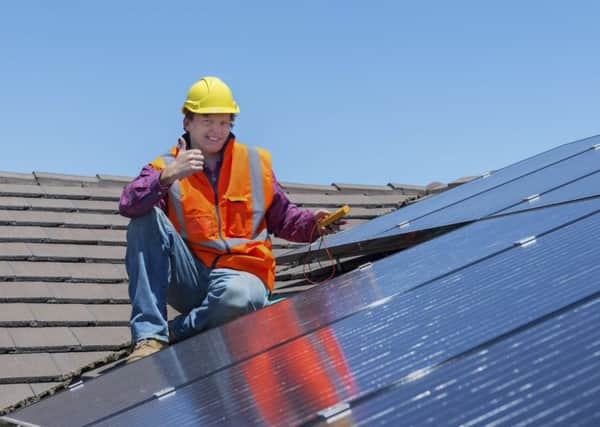Fabrice Leveque: We need more energy efficient homes


Scotland’s latest annual climate report card was full of positives – emissions were below the target level for the first time, and below our target for 2020, six years earlier than planned. Emissions fell, the economy grew, and we maintained our position as a leader both within the UK and abroad. But a look behind the figures shows that not all areas of the economy are to be thanked, with some areas working harder than others. So whilst our landfill sites and electricity supplies get ever cleaner, our homes and buildings lag far behind.
Whilst some sectors of the economy are rapidly cleaning up their act, too little is being done to cut the emissions that come from heating our homes, offices and public buildings. Emissions from the waste and electricity sectors have fallen by 50 per cent and 26 per cent since Scotland’s climate change act was passed in 2009, reflecting strong Government policy, UK support and the success of new technologies like wind energy. In contrast, emissions from homes have fallen by just 17 per cent over the same period.
Advertisement
Hide AdAdvertisement
Hide AdWhat’s more, much of this reduction is down to warmer weather rather than improvements in the energy efficiency of our buildings. In mild winters we turn down our heating, use less energy and produce fewer emissions; but these savings are not locked in, and emissions will go up with the next cold winter. If we take out the effects of Scotland’s warmest year since records began, the result is less impressive – the 2013 emissions from homes were just 1.3 per cent lower than in 2009, thanks to a chilly winter.
That cold winter helped push Scotland above its climate targets, and in response steps were taken to make the energy efficiency of buildings a priority for infrastructure investment, recognising the significant work yet to be done and signalling a commitment to greater effort.
Previous schemes made a good start, but much remains to be done. Our buildings may be pretty, but too many are amongst the oldest and least efficient in Europe, leaking heat out of walls, roofs and windows. Whilst a new home can be built to use less than £500 of energy per year, the average Scottish household spends around £1,250. This poor energy efficiency means that nearly a million Scots can’t afford to adequately heat their homes, and 1.3 million of us live in cold homes – homes that are below the ‘C’ energy performance rating that is recommended for healthy living.
Energy efficiency isn’t the low hanging fruit of climate action – its fruit that’s already on the ground. Installing insulation will save energy and carbon for decades, turning cold houses into warm homes, but also helping to improve health, well-being and boosting local economies. That’s why WWF Scotland, along with an alliance of more than 50 organisations, have campaigned for many years for a Scottish energy efficiency programme that brings about a genuine transformation in our homes and buildings.
We believe that a mix of regulations and incentives will be needed to drive this change, and funding will need to be committed to the programme at the next spending review. The Government should consult on introducing minimum energy standards for all homes, which will be crucial to driving demand under the new scheme. Just as regulations have made our cars and products more efficient, they should be used to create a market for energy efficient homes. We’re calling for a target of making all homes a ‘C’ rating by 2025, to send a clear signal of ambition and ensure that all the benefits on offer are delivered.
A year after becoming a Government priority, we’re still waiting to hear what the ambition of Scotland’s new energy efficiency programme will be, how it will be delivered or what funding it might receive. The coming months will be critical, with long-term decisions on spending and the policies that will be deployed.
The Scottish Government recently acknowledged its target to eradicate fuel poverty by November this year will be missed. It’s therefore more important than ever that we see bold action to bring our buildings in from the cold and let them share in the benefits of a low carbon transformation – less fuel poverty, improved health and new, local jobs.
• Fabrice Leveque is climate and energy policy officer, WWF Scotland